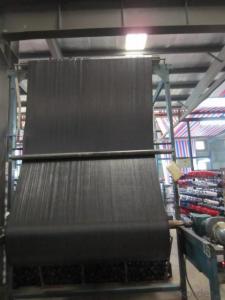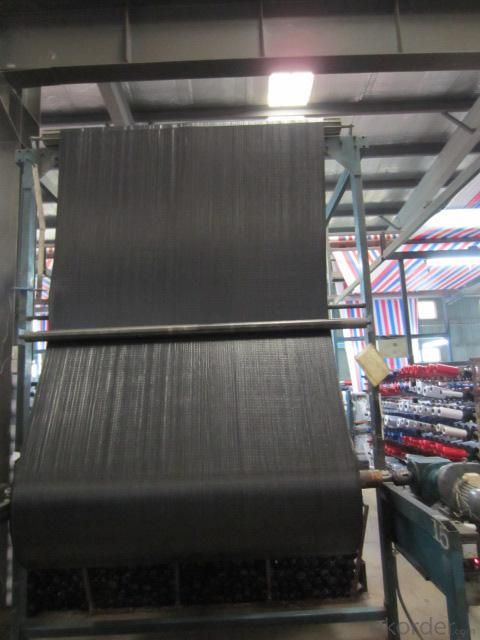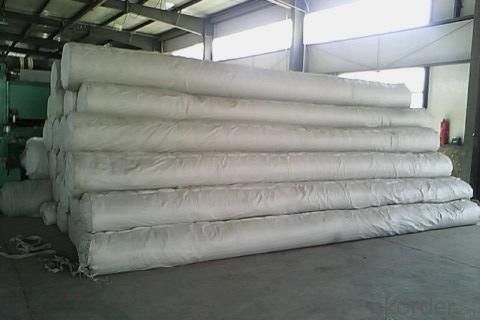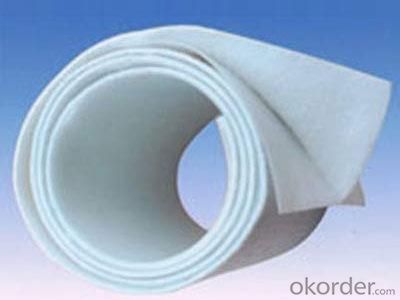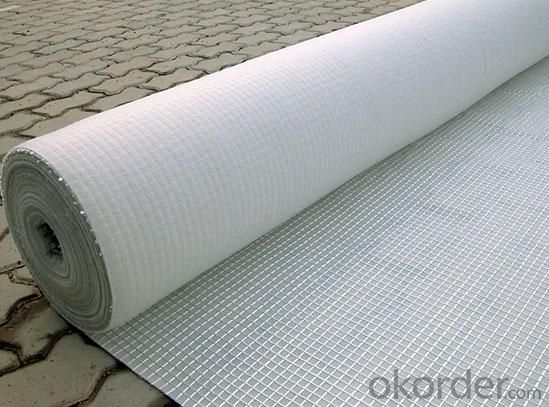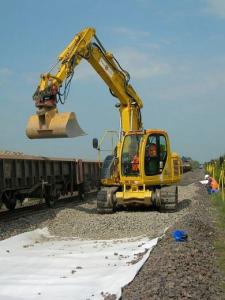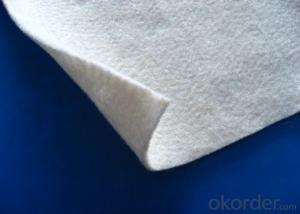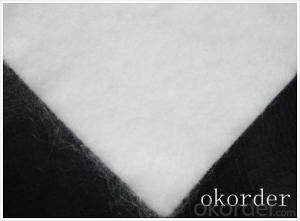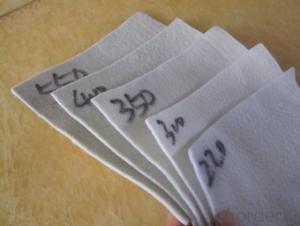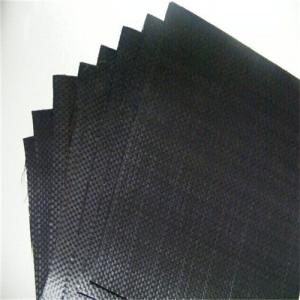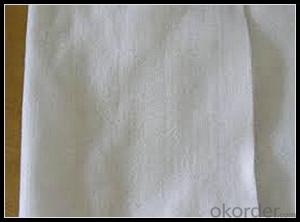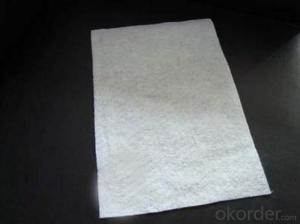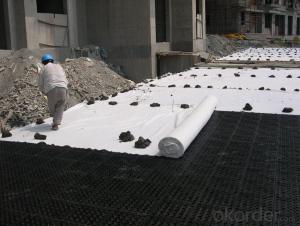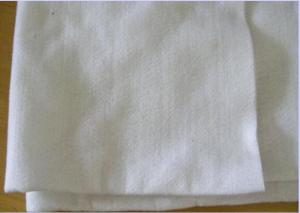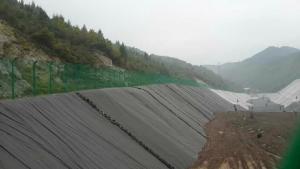BMR Geotextile Waterproof Nonwoven Fabric Geotextile for Road Construction
- Loading Port:
- Qingdao
- Payment Terms:
- TT OR LC
- Min Order Qty:
- 10000 m²
- Supply Capability:
- 500000 m²/month
OKorder Service Pledge
OKorder Financial Service
You Might Also Like
Structure of High Tensile Waterproof Nonwoven Fabric Geotextile Description:
High strength,anti-aging,anti-acid and alkali,abrasion resisting,flexibility,and easy for constructjion.
Main Features of the Waterproof Nonwoven Fabric Geotextile:
The geotextile is made of polypropylene staple fibers on cross-laying equipment and needle punched equipment.
Used in dam, tunnel, reservoir, channel and roofing for anti-leakage, It laso used in scrap yard protection.
Water conservancy project and hydropower project
Road paving,railway
Airport and port
River bank protection and tunnel
Environmental protection, etc
Waterproof Nonwoven Fabric Geotextile Images
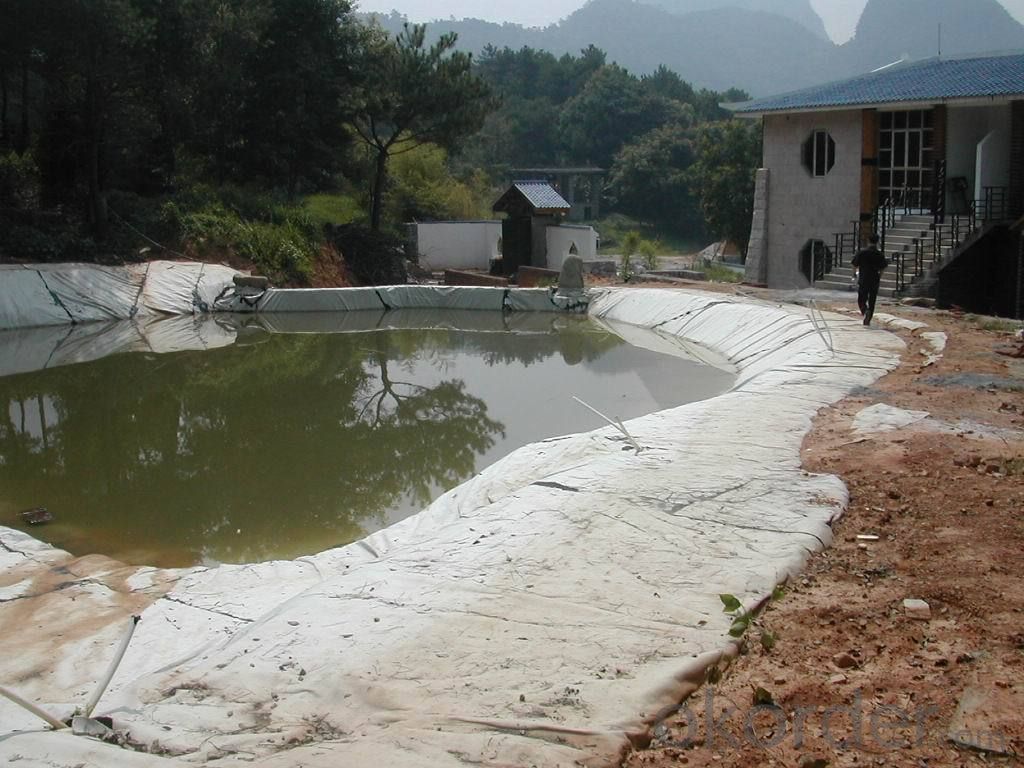
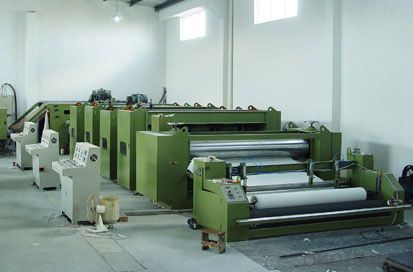
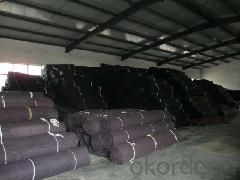
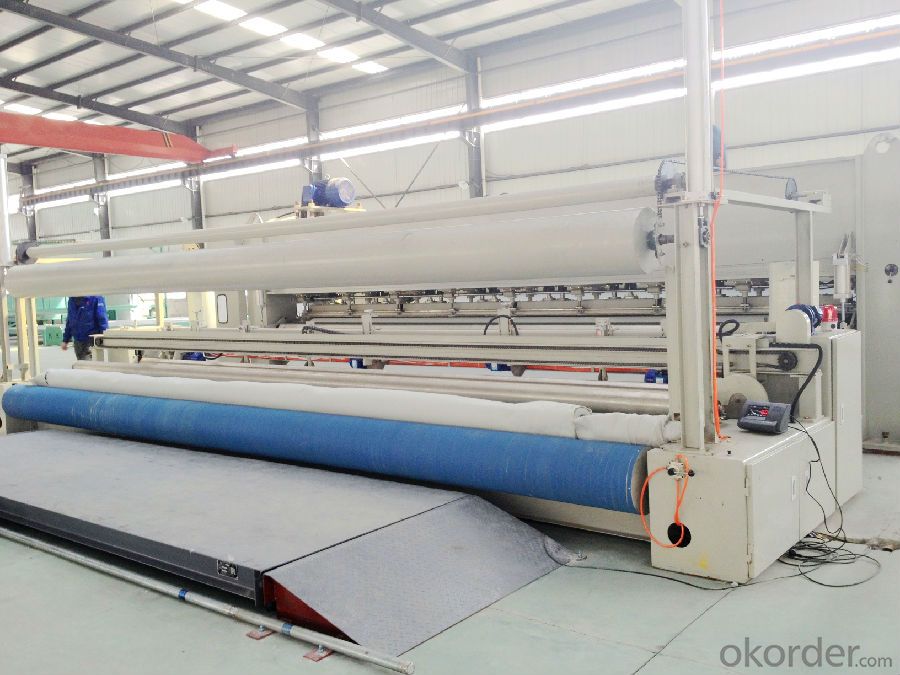
Waterproof Nonwoven Fabric GeotextileSpecification:
1.plastic woven geotextile for dam
2.Materials:PP
3.Tensile strength:15~100kn/m
4.Unit weight:100~400g/m2
5.Width:1 ~6m
| Item | Value | Note | ||||||||||
| 100 | 150 | 200 | 250 | 300 | 350 | 400 | 450 | 500 | 600 | 800 | ||
| Weight Variation(%) | -8 | -8 | -8 | -8 | -7 | -7 | -7 | -7 | -6 | -6 | -6 | |
| Thickness(mm)≥ | 0.9 | 1.3 | 1.7 | 2.1 | 2.4 | 2.7 | 3 | 3.3 | 3.6 | 4.1 | 5 | |
| Width Variation% | -0.5 | |||||||||||
| Breaking Strength( KN/m)≥ | 2.5 | 4.5 | 6.5 | 8 | 9.5 | 11 | 13 | 14 | 16 | 19 | 25 | MD and TD |
| Elongation at break% | 25-100 | |||||||||||
| CBR Mullen Burst Strength KN≥ | 0.3 | 0.6 | 0.9 | 1.2 | 1.5 | 1.8 | 2.1 | 2.4 | 2.7 | 3.2 | 4 | |
| Sieve Size O90(mm) | 0.07-0.2 | |||||||||||
| Vertical Permeability Coefficient cm/s | K×(10-1-10-3) | K=1.0-9.9 | ||||||||||
| Tearing Strength KN≥ | 0.08 | 0.12 | 0.2 | 0.2 | 0.2 | 0.3 | 0.3 | 0.4 | 0.4 | 0.5 | 0.6 | MD and TD |
FAQ
We have organized several common questions for our clients,may help you sincerely:
Q1: How about your company?
A1:Our company are one of the largest geosynthetic products supplier in the world.We have the products experience more than 20 years.Already export to USA/Germeny/Australia/Zambia/Brazil etc.more than 20 countries.Almost 10years.Our products including Geocell/Fiberglass Geogrid/Geomembrane/Geotextile/Geonet etc.
Q2.Does your products have good qualitity?
A2:Yes,we have do many big projects such as the 2008 Beijing Olympic BIRD NEST. Divert water from the south to the north project. And our products have CE certificate also.
Q3:How long can we receive the products after purchase?
A3:In the purchase of product within three working days, We will arrange the factory delivery as soon as possible. The pecific time of receiving is related to the state and position of customers.Commonly 15-20 working days can be delivery.
- Q: What are the different methods of geotextile installation?
- There are several different methods of geotextile installation, including trenching, direct placement, sewing, stapling, and adhesive bonding. Trenching involves excavating a trench and placing the geotextile fabric in it before backfilling. Direct placement involves simply unrolling and placing the geotextile on the desired surface. Sewing involves stitching the geotextile to another fabric or material, providing additional strength. Stapling involves using staples or nails to secure the geotextile to the ground or other surfaces. Adhesive bonding involves using specialized adhesives to attach the geotextile to the desired substrate. The choice of installation method depends on the specific project requirements and the type of geotextile being used.
- Q: How do geotextiles contribute to soil separation?
- Geotextiles contribute to soil separation by acting as a barrier between different soil layers, preventing them from mixing or interacting. This separation helps to maintain the stability and integrity of the soil structure, prevents erosion, and enhances the overall performance of the soil in various construction and landscaping applications.
- Q: Geotextile detection sampling, how many meters
- General a square meter can be, I professional production
- Q: How do geotextiles help with slope stabilization?
- Geotextiles help with slope stabilization by providing reinforcement and retaining soil on slopes. They act as a barrier, preventing erosion and the movement of soil particles, while still allowing water to pass through. This helps to maintain the stability of slopes and prevents landslides or slope failures.
- Q: How do geotextiles help with reinforcement of geogrid reinforced embankments?
- Geotextiles help with reinforcement of geogrid reinforced embankments by acting as a separation layer between the geogrid and the embankment material. They prevent the intermixing of soil particles, enhance the load distribution, and provide additional stability to the embankment. Additionally, geotextiles improve the overall performance of the geogrid by reducing the potential for clogging and maintaining its long-term design strength.
- Q: How do geotextiles contribute to soil drainage?
- Geotextiles contribute to soil drainage by providing a permeable layer that allows water to pass through while preventing soil particles from clogging or compacting the drainage system. This helps to improve the overall drainage capacity of the soil by promoting the efficient flow of water, reducing the risk of waterlogging, and enhancing the stability and longevity of the soil structure.
- Q: How do geotextiles contribute to soil reinforcement in embankments?
- Geotextiles contribute to soil reinforcement in embankments by providing strength and stability to the soil. They act as a barrier between the soil layers, preventing their mixing and promoting effective load distribution. Geotextiles also enhance the soil's tensile strength, reducing the risk of erosion and slope failure. Additionally, they improve drainage by allowing water to pass through, reducing pore pressure and maintaining soil stability. Overall, geotextiles play a crucial role in enhancing the performance and durability of embankments by reinforcing the soil and mitigating potential geotechnical issues.
- Q: How do geotextiles help in preventing lateral spreading of soil?
- Geotextiles help in preventing lateral spreading of soil by providing a barrier that restricts the movement of soil particles, thereby reducing the potential for erosion and instability. The geotextile material acts as a separator, preventing the mixing of different soil layers and maintaining their integrity. It also enhances soil reinforcement, distributing the applied load more evenly and increasing the overall stability of the soil structure. Additionally, geotextiles improve drainage by allowing water to flow freely while preventing the loss of fine particles. Overall, geotextiles play a crucial role in preventing lateral spreading of soil and ensuring the long-term stability of various civil engineering projects.
- Q: What are the different manufacturing methods for geotextiles?
- There are several different manufacturing methods for geotextiles, including weaving, knitting, and nonwoven techniques. Weaving involves interlacing yarns to create a fabric, while knitting uses a series of loops to form the fabric. Nonwoven methods involve bonding fibers together using heat, chemicals, or mechanical processes. Each method has its own advantages and is selected based on the desired properties and applications of the geotextile.
- Q: Are geotextiles suitable for use in geocell retaining walls?
- Yes, geotextiles are suitable for use in geocell retaining walls. Geotextiles help in enhancing the structural stability of the geocell walls by providing soil confinement, filtration, and erosion control. They prevent soil migration, improve drainage, and increase load-bearing capacity, making geotextiles an ideal choice for reinforcing geocell retaining walls.
Send your message to us
BMR Geotextile Waterproof Nonwoven Fabric Geotextile for Road Construction
- Loading Port:
- Qingdao
- Payment Terms:
- TT OR LC
- Min Order Qty:
- 10000 m²
- Supply Capability:
- 500000 m²/month
OKorder Service Pledge
OKorder Financial Service
Similar products
Hot products
Hot Searches
Related keywords
